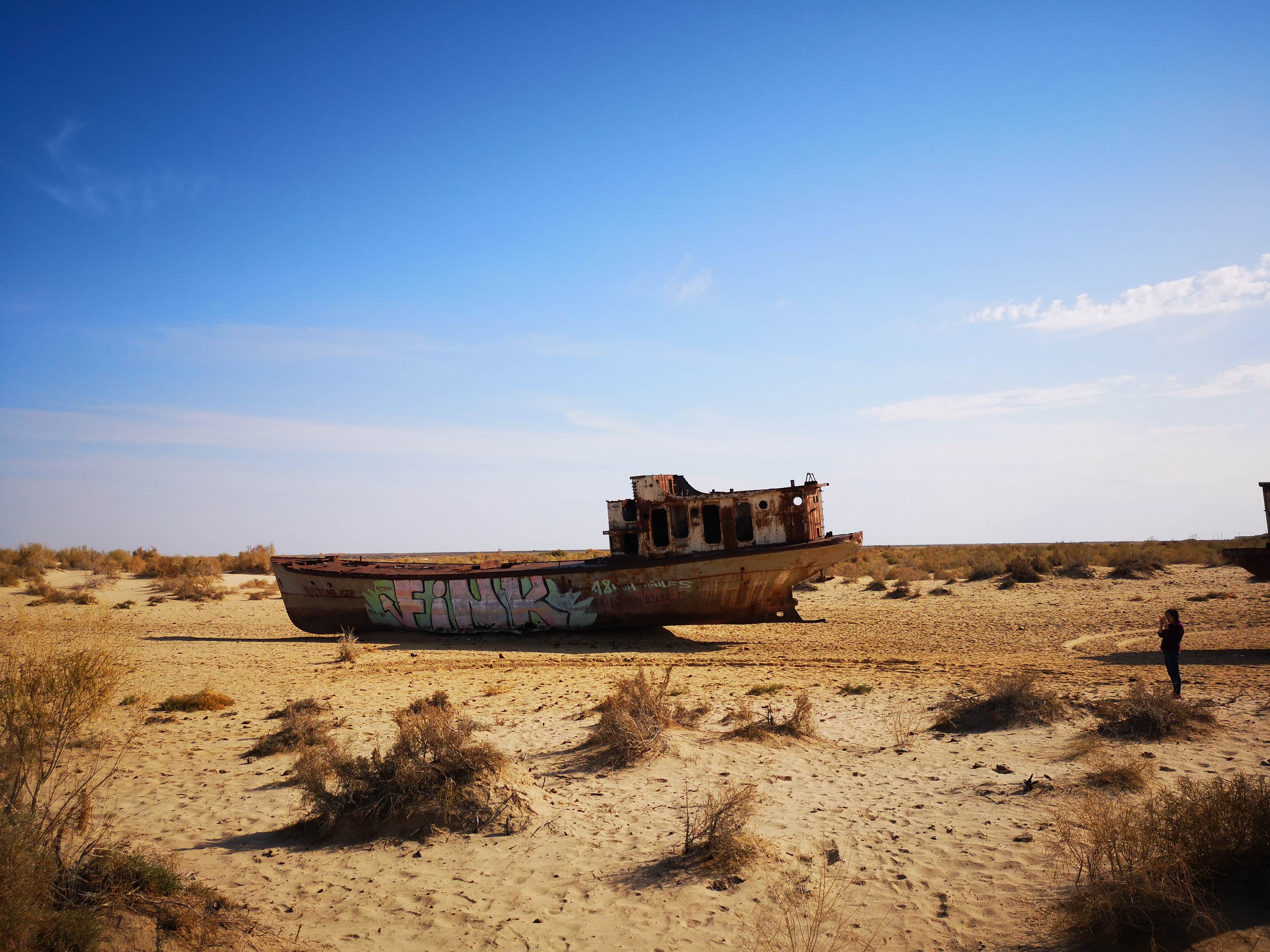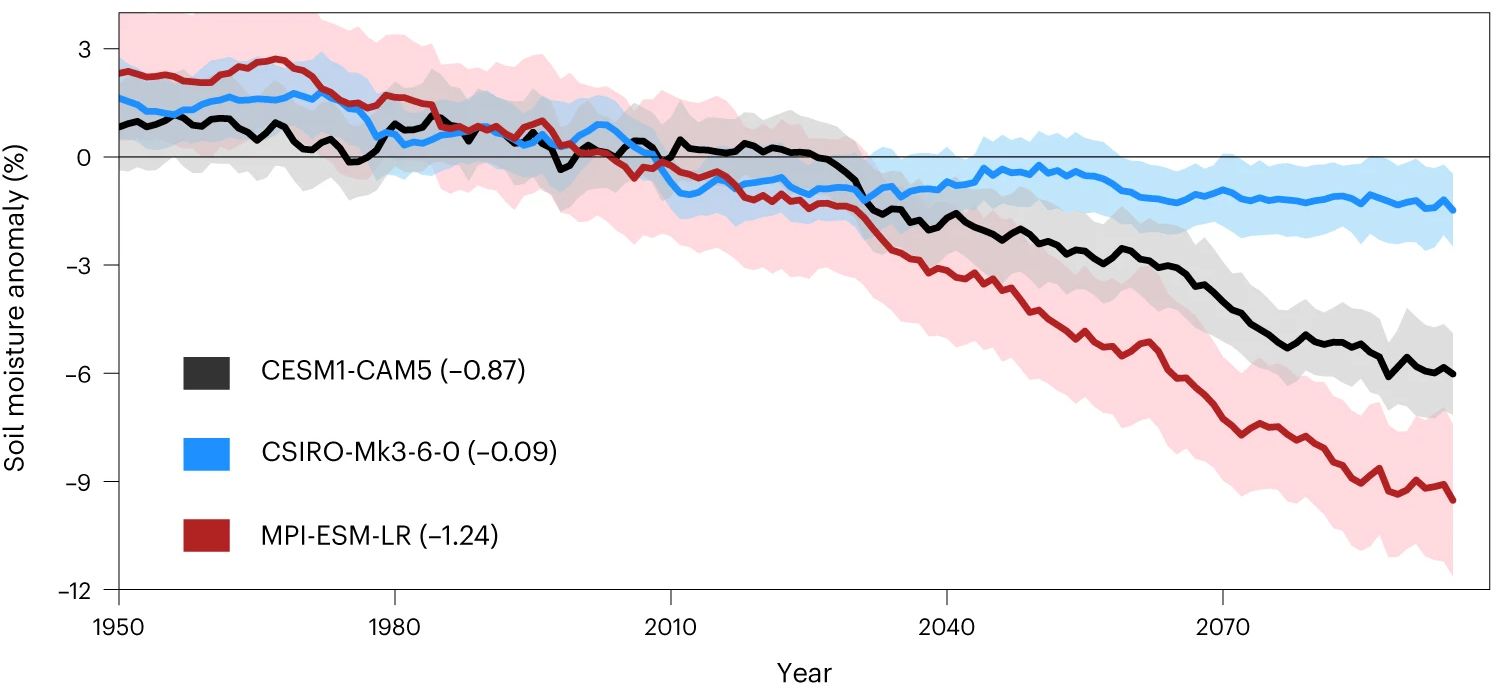Aggravating agricultural droughts over water-scarce Central Asia
Published in Earth & Environment

A severe agriculture drought swept Central Asia in 2021 in its early growing season, causing mass die-offs of crops and livestock and leading to increased food prices. This harsh drought is not an independent event but a manifestation of an intensified long-time drying trend since the 1990s. Whether the observed agriculture droughts will continue in the future is of great concern to both the public and the scientific community.

In this study, we show from analysis of multi-lines of evidence that the aggravation of agricultural droughts across southern Central Asia in its early growing season in the last three decades was caused by the combination of anthropogenic forcing and internal variability associated with the Interdecadal Pacific Oscillation (IPO). We also found that human-induced reduction in soil moisture, which is a quantitative measure of agriculture drought, will be aggravated over the rest of the 21st century due to the rapid warming climate under RCP8.5, a very high baseline emission scenario.
Agricultural drought refers to soil moisture deficits, which is closely related to meteorological factor changes and usually happens after meteorological drought. The anthropogenic external forcing and the natural internal variability of the climate system together have led to aggravated droughts since the 1990s by modulating long-term changes in meteorological factors, including temperature and precipitation.
The anthropogenic external forcing includes anthropogenic changes in greenhouses gases, aerosols, and land use, etc., and mainly refers to the increase in greenhouse gas concentrations in this research. The worldwide continued emission of greenhouse gases has resulted in a rapid warming across Central Asia, which has further led to increased evapotranspiration and reduced soil moisture in this region. The prominent natural variability that influences Central Asian droughts is a long-term oscillation of sea surface temperatures in the Pacific Ocean, i.e., the IPO, which waxes and wanes every 20 to 30 years. The recent phase change of IPO cycle since the 1990s, from a warmer than normal sea surface in the tropical central-eastern Pacific to a cooler than normal condition, resulted in a reduction in spring rainfall across southern Central Asia and a subsequent decrease in soil moisture in the early growing season. Both the human-induced warming and the IPO-dominated reduction in spring rainfall are favorable to soil moisture deficits over Central Asia, and finally the aggravated agricultural droughts in the past three decades.
We also extended our study to include future projections. We examined the impact of anthropogenic external forcing and the IPO on future changes in agricultural droughts across Central Asia under the RCP8.5 scenario. Dominated by human-induced warming, the droughts in southern Central Asia will worsen over the rest of the 21st century. Even if the IPO begins a warm phase that is favorable to more precipitation in the next few decades, it will still have difficulty countering worsening droughts. The IPO could not counterbalance the human-induced drying trend over Central Asia, but it could modulate the drying rate in the near-term. RCP8.5 represents the high-end of possible baseline emissions scenarios that included no policy-driven mitigation. The projection examines the potential worst-case outcomes.

In the published article, we show that the reduction in surface soil moisture across southern Central Asia since the 1990s is irreversible and will continue in the twenty-first century under RCP8.5 scenario unless ambitious climate actions are taken to reach global peaking of greenhouse gas emissions as early as possible to achieve a climate neutral world. Considering the increasing risks of agricultural drought, there is an urgent need of developing a thorough risk management plan at sectoral, local, country and even multicountry levels to adapt and mitigate the enhanced agriculture droughts for food security and livestock production.
Follow the Topic
-
Nature Geoscience

A monthly multi-disciplinary journal aimed at bringing together top-quality research across the entire spectrum of the Earth Sciences along with relevant work in related areas.
Related Collections
With Collections, you can get published faster and increase your visibility.
Geology of the Moon
Publishing Model: Hybrid
Deadline: Jan 31, 2026
Progress towards the Sustainable Development Goals
Publishing Model: Hybrid
Deadline: Ongoing




Please sign in or register for FREE
If you are a registered user on Research Communities by Springer Nature, please sign in